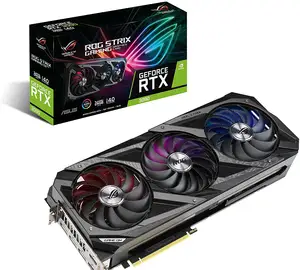Popular in your industry


























































































 Ready to Ship
Ready to Ship










 Ready to Ship
Ready to Ship




















































































































Top categories
About monitor clusters
Introduction to Monitor Clusters
Monitor clusters are essential components in modern data centers and network operations centers. These clusters consist of multiple monitors that work together to provide a comprehensive view of various systems and applications. By utilizing monitor clusters, businesses can efficiently monitor, analyze, and manage their IT infrastructure in real-time, ensuring optimal performance and reliability.
Design and Configuration of Monitor Clusters
The design of monitor clusters typically includes a centralized monitoring server that collects data from individual monitors deployed across the network. These monitors are often equipped with advanced sensors and software applications to capture and analyze performance metrics. The configuration of monitor clusters can be customized based on the specific requirements of the organization, allowing for scalability and flexibility in monitoring operations.
Technical Specifications of Monitor Clusters
Monitor clusters are equipped with high-resolution displays ranging from 24 to 32 inches, providing clear and detailed visualizations of monitoring data. They feature multi-port connectivity options, including HDMI, DisplayPort, and USB, to ensure seamless integration with various devices. The monitors in a cluster are designed to support real-time data processing and visualization, enabling quick decision-making and troubleshooting.
Integration with Prometheus, Kubernetes, and Grafana
One of the key advantages of monitor clusters is their seamless integration with monitoring tools such as Prometheus, Kubernetes, and Grafana. By connecting monitor clusters to these tools, businesses can gain deep insights into the performance and health of their IT infrastructure. The integration allows for real-time monitoring, alerting, and visualization of critical metrics, enhancing overall operational efficiency.
Scalability and Customization Options
Monitor clusters offer scalability and customization options to meet the evolving needs of modern businesses. Organizations can easily expand their monitor clusters by adding additional monitors or upgrading existing ones to accommodate growing monitoring requirements. Furthermore, businesses can customize the monitoring dashboards and alerts to align with their specific operational goals and performance metrics.
Choosing the Right Monitor Cluster Solution
When selecting a monitor cluster solution for your business, it is essential to consider factors such as the number of monitors required, display resolution, connectivity options, and compatibility with monitoring tools like Prometheus, Kubernetes, and Grafana. Additionally, assessing the scalability and customization features of the monitor cluster solution is crucial to ensure it can adapt to your organization's changing needs.
Enhanced Monitoring Capabilities with PRTG Cluster
Integrating monitor clusters with PRTG Cluster further enhances monitoring capabilities by providing a comprehensive network monitoring solution. PRTG Cluster offers advanced monitoring features, including network traffic analysis, device health monitoring, and customizable alerting mechanisms. By incorporating PRTG Cluster into monitor clusters, businesses can achieve a holistic view of their IT infrastructure and streamline monitoring operations.
Optimizing Performance with K8s Prometheus Grafana Integration
The integration of monitor clusters with K8s Prometheus Grafana delivers a powerful monitoring and visualization platform for businesses. K8s ensures efficient cluster management, while Prometheus collects metrics and generates alerts based on predefined rules. Grafana complements this setup by offering customizable dashboards and visualizations, enabling organizations to optimize performance and ensure system reliability.
Remote Monitoring and Management Capabilities
Monitor clusters equipped with remote monitoring and management capabilities enable businesses to oversee their IT infrastructure from anywhere at any time. Remote access features allow IT teams to monitor performance metrics, troubleshoot issues, and make configuration changes remotely, ensuring continuous operations and minimizing downtime. This remote monitoring capability is essential for businesses with distributed or geographically dispersed networks.








































